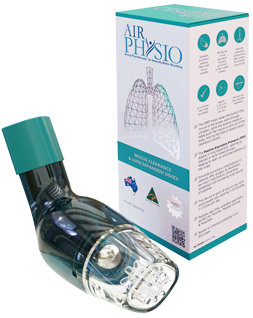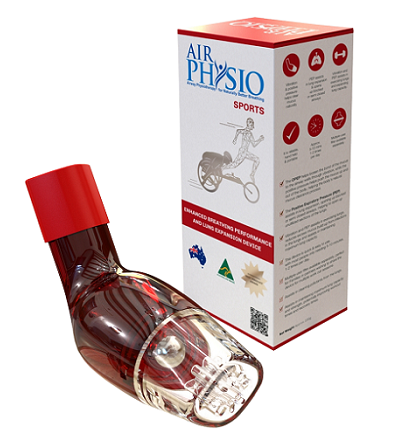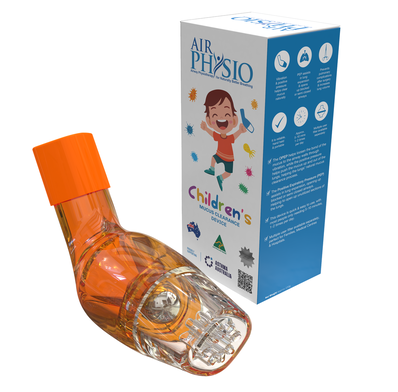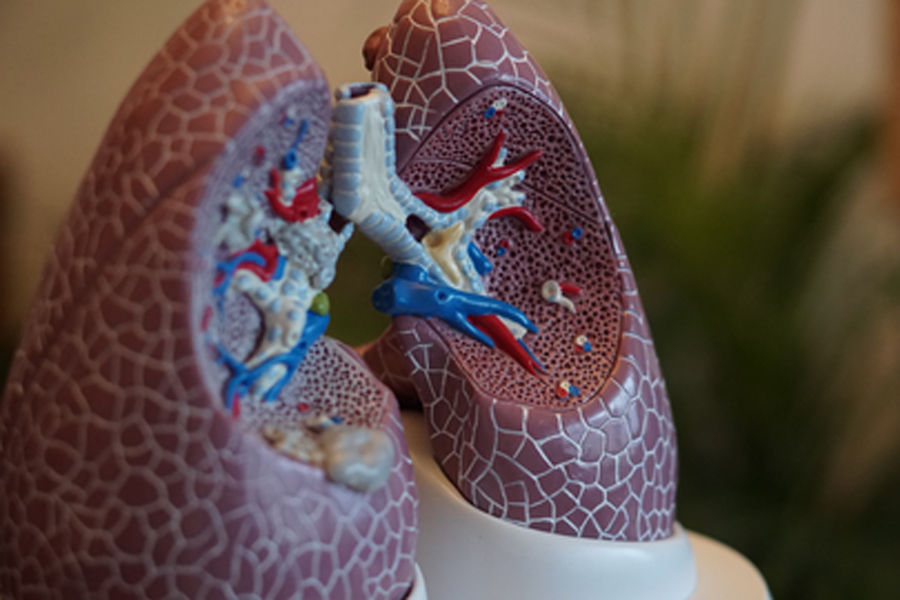Common Types of Respiratory Medications & What You Need to Know
When you have a respiratory illness, the best medicine you can use is a type of respiratory medication. A respiratory medication is inhaled through a respiratory device such as a nebulizer or inhaler.
A nebulizer is a type of breathing treatment machine that will turn liquid medicine into a fine mist to disperse using a built-in air compressor. You will then inhale the mist of medicine when the air compressor disperses the medicine through the mouthpiece or mask of the device.
An inhaler works similarly, except you are in control of when the medicine from the inhaler is dispersed. You will disperse the medicine by pressing down on the canister of medicine in the inhaler while holding your mouth onto the inhaler mouthpiece. Then you will inhale the medicine that you have dispersed.
Both inhalers and nebulizers can use a variety of respiratory medications for various respiratory illnesses and diseases.
These are the most common types of respiratory medications and what you need to know about each of them.
Bronchodilators
Bronchodilators are the most commonly used respiratory medication. Bronchodilators are used in inhalers for acute breathing conditions where you need immediate relief. This includes asthma, COPD, and allergic reactions.
Bronchodilators are respiratory medications that dilate the airways by relaxing the bronchial muscles. This allows you to improve your breathing through relaxed and clear airways.
Most bronchodilators are short-acting or long-acting beta-agonists.
Beta-Agonists: short-Acting and Long-Acting Inhaler
Beta-agonists are classified as either short-acting or long-acting, and the medicine used will either stimulate or block the parasympathetic system.
Short-acting inhalers are often called rescue inhalers because they provide immediate relief when the airways are constricting or restricted due to an asthma attack or exercise-induced asthma. Short-acting inhalers provide relief for approximately 2 to 4 hours after use. The most common respiratory medication of short-acting inhalers is albuterol. Albuterol works by relaxing the bronchial muscles within the airways to improve breathing due to a sudden asthma attack or exercise-induced asthma.
Albuterol can also help break up mucous that has collected in your lungs. This turns your unproductive cough into a productive one because it allows you to cough up the mucous that has settled into your chest.
Long-acting inhalers are used to manage and control asthma rather than treat the acute symptoms that can quickly appear. Long-acting inhalers work in the same way that short-acting inhalers use; by relaxing the muscles within the airways. The only difference is that long-acting inhalers are used to relieve the daily symptoms of asthma and COPD, rather than an acute attack.
Corticosteroids
Corticosteroids are respiratory medications that contain steroids. Corticosteroids are prescribed to suppress inflammation that occurs when your body. The steroids in corticosteroids will decrease inflammation and subsequently prevent asthma or COPD flare-ups from occurring.
Corticosteroids are most often prescribed to those who suffer from COPD. With COPD, the muscles in your airways are regularly inflamed. This causes you to experience irritation, difficulty breathing, and swelling. Corticosteroids reduce inflammation which improves your ability to breathe without irritation or swelling.
The most common corticosteroid is prednisone. Prednisone is a powerful steroid that most people respond well to, which is why it is so often prescribed, especially in acute situations.
Antimicrobials and Antivirals
When you have a respiratory infection, whether viral or bacterial, you may need an antibiotic or antiviral medication. Antimicrobials and antivirals can be administered through a nebulizer to help fight the bacteria or virus that is causing you to be sick.
ANTIMICROBIALS PENTAMIDINE AND TOBRAMYCIN
Antimicrobials include commonly-prescribed respiratory medications, pentamidine and tobramycin. Pentamidine is often used to treat pneumonia that has developed in the lungs. When inhaled, pentamidine kills the bacteria that are causing the infection within the body.
Tobramycin is another antimicrobial respiratory medication. It is most often prescribed to treat cystic fibrosis. Tobramycin will stop the bacteria that infect those who have cystic fibrosis.
Cystic fibrosis can be a debilitating disease because it causes a thick and sticky mucous to develop in the airways of the lungs, making it extremely difficult and uncomfortable to breathe. This mucous can become infected, causing the symptoms of cystic fibrosis to become exacerbated.
Tobramycin helps kill the bacteria that cause infections within those who have cystic fibrosis. This not only helps get rid of the infection, but it also helps clear the airways, improves breathing and reduces lung damage.
Antivirals ribavirin And zanamivir
Antivirals are used to treat viral respiratory infections, including RSV and influenza. The two most common antivirals that are prescribed for respiratory viruses include ribavirin and zanamivir.
Ribavirin is prescribed for children who have been diagnosed with RSV and require ribavirin inhalation through a nebulizer. RSV is a common virus that can quickly become dangerous if a child does not have a high level of oxygen in the blood.
This occurs when the airways become inflamed and constricted, preventing the body from taking deep breaths and saturating the blood with enough oxygen. Pneumonia can also develop within one or both lungs, causing RSV to become a more severe medical emergency.
Ribavirin will help prevent the virus from producing and spreading within the body, ultimately killing it over time. Ribavarin is typically administered many times a day for several days until symptoms improve.
Zanamivir is an antiviral inhalation medication used to treat the infections that can occur from influenza type A and B. Zanamivir will help reduce the symptoms that accompany the flu, including fever, coughing, and headache. Zanamivir must be taken within the first 48 hours of the symptoms starting for zanamivir to effectively prevent the virus from spreading within the body.
Epinephrine
Epinephrine is used to treat common respiratory illnesses, such as croup, angioedema, and bronchiolitis. Any of these common respiratory illnesses can be treated with epinephrine respiratory medications.
Epinephrine works directly on the airways of the lungs by narrowing the blood vessels to allow the airways to open. This is what makes epinephrine so successful in treating common respiratory conditions.
Antihistamines
Often, asthma is triggered or worsened because of allergens. If you have been diagnosed with asthma and seasonal allergies, you can almost guarantee that you will have an asthma flare-up soon after becoming exposed to the allergens.
To prevent this, you can take an antihistamine to help your body fight off the symptoms that occur when coming into contact with the allergens. Should the symptoms become too severe, you may have to switch to an antihistamine inhalation through a nebulizer.
The best antihistamines that act as a respiratory medication to prevent asthma include loratadine, diphenhydramine, cetirizine, and fexofenadine. These are generic, over-the-counter antihistamines that can help your body fight off the more severe symptoms that can occur after coming into contact with the allergens.
Should the symptoms become too severe, your doctor may have to prescribe an antihistamine inhalation to use with a nebulizer.
Respiratory Stimulants
A respiratory stimulant will need to be used when suffering from chronic obstructive lung diseases. These types of lung diseases will cause the oxygen level in the blood to significantly drop. It’s not just a lack of oxygen within the blood, but also an abundance of carbon dioxide within the blood that can cause these medical issues.
Another medical reason that a respiratory stimulant may need to be used is for sleep apnea. Sleep apnea occurs when breathing inexplicably starts and stops while a person is asleep. Obstructive sleep apnea is the most common form of sleep apnea.
Obstructive sleep apnea occurs when the throat muscles relax. The relaxation of the throat muscles causes the airways in your throat to close. This causes your brain to realize that it is not receiving oxygen and that you are not breathing which causes your brain to jolt you awake so that you can continue breathing.
When your body is deprived of oxygen for any period of time, the total oxygen level within the body will decrease. This can quickly become a severe respiratory issue as the organs within the body need oxygen to survive and function properly. If the organs within the body fail to have adequate oxygen saturation, they can become damaged or fail to heal if becoming infected.
To combat these types of medical conditions, a respiratory stimulant can be prescribed. A respiratory stimulant will cause the person to breathe, which will ultimately raise the oxygen within the blood to safe functioning levels.
Arguably the most common respiratory stimulant is doxapram.
Doxapram stimulates the peripheral carotid chemoreceptors to cause the body to breathe regularly to maintain adequate oxygen levels within the blood. It is the most aggressive respiratory stimulant because it directly causes the body to breathe to increase oxygen levels.
Other types of respiratory stimulants may be prescribed to help increase the oxygen levels within the blood; however, they are not as aggressive as doxapram. These respiratory stimulants work by opening the air passages in the lungs, rather than triggering them to breathe.
What You Need to Know When Using Respiratory Medications

Always follow the directions from your physician or pharmacist when it relates to a prescribed medication. The medication you take will need to be taken or administered as directed. Failing to take the respiratory medication as directed can cause you to remain sick or can cause you to take too much medicine.
Sometimes your doctor may prescribe a combination of respiratory medications to treat the disease. This is especially common for those who are suffering from a bacterial infection on top of asthma. You may have a short-acting inhaler along with a powerful antibiotic to knock out the infection you are battling.
One of the most common side effects of many respiratory medications is increased energy or aggressiveness. Albuterol and other steroids will cause an increase in energy, appetite, and jitters. For this reason, your doctor may recommend taking these respiratory medications earlier in the day so that they don’t keep you up at night.
Finally, if using a respiratory medication that requires inhalations, always make sure that your nebulizer is clean. Using a clean nebulizer is imperative to ensure that you don’t become even sicker from something completely unrelated to the respiratory issue you are trying to treat.
Conclusion
Many different respiratory medications are used to treat many respiratory illnesses and diseases. Asthma and COPD are the two most common types of respiratory diseases that respiratory medications will treat, but they can also be used to treat influenza, RSV, and bronchitis.
These are the most common types of respiratory medications and why they continue to be effective. While they may not cure the respiratory disease you are combating, they will make the symptoms much more tolerable and manageable daily.
Average Lung AirPhysio
ENJOY BETTER BREATHING - Use this 100% Drug Free Device - AIRPHYSIO

Recent Posts
Sports AirPhysio
IMPROVE YOUR SPORTING PERFORMANCE - Use this 100% Drug Free Device - AIRPHYSIO

AirPhysio Child
BETTER BREATHING FOR YOUR CHILD - Use this 100% Drug Free Device - AIRPHYSIO

Categories
- asthma (2)
- atelectasis (2)
- bronchiectasis (2)
- copd (3)
- cystic-fibrosis (45)
- featured (10)
- uncategorized (2)


